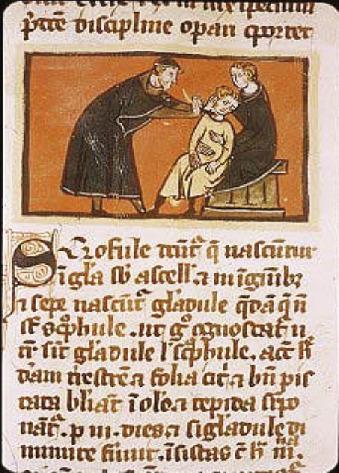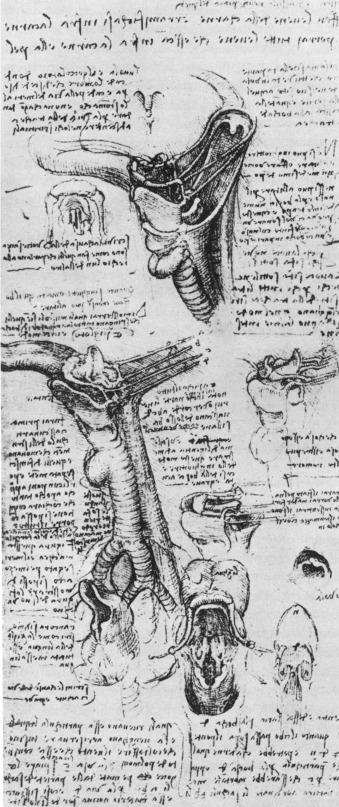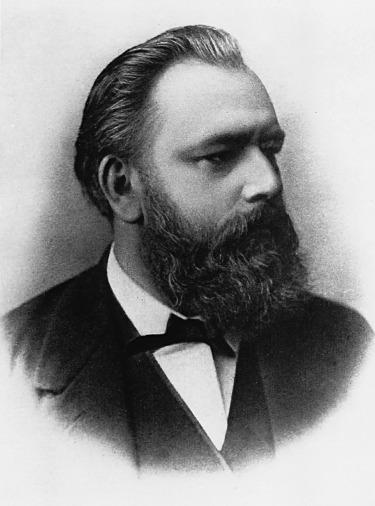Physical Address
304 North Cardinal St.
Dorchester Center, MA 02124
The history of thyroid surgery closely parallels the evolution of modern surgical techniques and the synthesis of our understanding of anatomy, physiology, endocrinology, and pathology. The evolution of thyroid surgical techniques has been convoluted. Even when thyroid and parathyroid disorders were first recognized as discrete entities, they were misunderstood. Initially, Graves’ disease was considered to represent a cardiac illness; hypothyroidism, a neurologic and dermatologic disorder; and hyperparathyroidism, a primary bone disorder. One of the first thyroid procedures in the 1600s resulted in the imprisonment of the surgeon. Fortunately, the anatomist and physiologist embraced the initial morbid surgical misadventures, ultimately rendering the applied art of thyroid surgery a safe and even triumphant treatment form. As Halsted has written, “The extirpation of the thyroid gland for goiter typifies perhaps better than any other operation the supreme triumph of the surgeon’s art.” The surgical story begins with the treatment of iodine deficiency.
Goiter has been recognized as a discrete disease entity since the earliest recorded history. The first mention of goiters in China occurs as early as 2700 b . c . Although goiter has been endemic in several parts of the world throughout history, it was not until 500 a . d . that Abdul Kasan Kelebis Abis, in Baghdad, performed the first recorded goiter excision. The patient survived despite massive postoperative bleeding. Other early remedies included the application of toad’s blood to the neck and stroking of the thyroid gland with a cadaverous hand.
In Europe, Abu al-Qasim is credited with performing and describing the technique of goiter excision where the patient just avoids exsanguination, as recorded in his surgical tome, Al-Tasrif , in 952 a . d . Early developments in thyroid surgery came from the school of Salerno, Italy, in the 12th and 13th centuries ( Figure 1.1 ). The typical operation involved insertion of two heated iron setons at right angles into the offending mass. These were then manipulated at the skin surface twice a day until they pierced the flesh. In cases in which arterial supply of the goiter was thought not to be excessive, the surface of the goiter was cut, the tumorous tissue was grasped with a hook, and the skin was dissected away from it. Once exposed, the section of encapsulated goiter would be removed with a finger. Pedunculated goiters would be ligated en masse with a bootlace and removed. During such procedures, patients were tied down to a table and held firmly. Although these procedures sometimes reduced goiter size, patients often died from sepsis or hemorrhage.

The anatomy of the normal thyroid gland was not generally understood until the Renaissance, with the work of Leonardo da Vinci ( Figure 1.2 ). He drew the thyroid as two globular glands, which he speculated filled up empty spaces in the neck ( Figure 1.3 ). Others pondered the function of the thyroid gland, speculating that its role was to lubricate the neck or make it more aesthetically pleasing. Caleb Hillier Parry of Bath, England, recognizing the thyroid gland’s vascularity, considered the gland a blood buffer to protect the brain from sudden increases in blood flow from the heart. In Roman times, increased neck girth was believed to herald the onset of puberty. Bartholomaeus Eustachius of Rome in the 16th century characterized the gland as “glandulam thyroideam” with two lobes connected via an isthmus. The term thyroid gland (glandulae thyreoidea) is attributed to Thomas Wharton (described in his work Adenographia , 1646), who gave it this name either because of the gland’s own shield-like shape ( thyreos : Greek “shield”) or because of the shape of the thyroid cartilage, with which it is closely associated.


In 1646 Wilhelm Fabricius reported the first thyroidectomy performed using scalpels. However, the patient, a 10-year-old girl, died and the surgeon was imprisoned. In 1791 Pierre Joseph Desault performed a successful partial thyroidectomy in Paris. Guillaume Dupuytren followed in Desault’s footsteps and in 1808 performed the first “total” thyroidectomy. Unfortunately, despite little intraoperative blood loss, the patient died of “shock.” The most successful thyroid surgeon of that time was Johann Hedenus, a German surgeon from Dresden. By 1821 he had reported on the successful removal of six large obstructing goiters. His remarkable series of successes would not be equaled for nearly 40 years. In the 1850s a variety of incisions—longitudinal, oblique, and occasionally Y-shaped—were performed for thyroidectomy. Collar incisions had been introduced by Jules Boeckel of Strasbourg in 1880. After skin incisions, most surgeons at this time performed blunt dissection. Bleeding was generally inadequately controlled. Bloodletting was performed for postoperative complications, despite perioperative blood loss. Typically, wounds were left open and dead spaces were either packed or left to fill with blood.
The progress of early thyroid surgery is intertwined with initial advances in our understanding of thyroid endocrinology. It had been known empirically for some time that seaweed kelp and marsh seawater reduced goiter size. In 1811 Bernard Courtois discovered iodine in burned seaweed. By 1820 Johann Straub and Francois Coindet, both Swiss, systematically studied the use of iodine to treat goiter. Coindet went on to recommend the use of iodine preoperatively to reduce the size and vascularity of goiters and consequently to lessen operative risks. The use of iodine preparations became widespread. Considered miracle drugs, iodine medications were abused, and toxicity often resulted. In the 1830s Robert Graves and Karl von Basedow initially described toxic diffuse goiter through recognition of the “Merseburg triad” of goiter, exophthalmos, and palpitations. , Interestingly, despite being attributed to Graves and Basedow, the association of goiter and orbital disease was initially described in the 11th century by two Persian physicians, Avicenna and Aj-Jurjani.
By the 1850s the mortality rate after thyroid surgery was still high, at approximately 40%. The French Academy of Medicine at this time condemned any operative intervention on the thyroid gland. At about this time Samuel David Gross, a prominent American surgeon, wrote in 1866:
Can the thyroid gland, when in a state of enlargement, be removed with a reasonable hope of saving the patient? Experience emphatically answers NO.… If a surgeon should be so foolhardy as to undertake it … every step of the way will be environed with difficulty, every stroke of his knife will be followed by a torrent of blood, and lucky will it be for him if his victim lives long enough to enable him to finish his horrid butchery. No honest and sensible surgeon would ever engage in it!
Landmark developments in surgery and medicine that occurred in the mid-1800s onward helped convert surgery of the thyroid gland from a bloody and condemned procedure to a modern, safe surgical intervention. Foremost among these developments were anesthesia, antisepsis, and surgical hemostatic instrumentation.
The surgical revolution began with the pivotal discovery of anesthesia, as it was subsequently termed by Oliver Wendell Holmes. In 1842 Crawford W. Long, from Georgia, was the first to use sulfuric ether as an anesthetic during surgery. The era of modern surgical anesthesia truly began with William Morton’s demonstration of ether’s efficacy at Massachusetts General Hospital (MGH) in Boston in 1846.
Thyroid surgery was simultaneously blossoming in other parts of the world. Nikolaiy Ivanovich Pirogov, a Russian surgeon, presented his understanding of the structure, function, and morphology of the thyroid while defending his doctorate at the age of 20 in 1831. Pirogov wrote: “Prior to extirpation, ligation of the superior thyroid artery should be performed and preferably on both sides. Regarding the inferior thyroid artery, due to its deep location under the gland, it has to be ligated after the lower end of the thyroid is lifted…”
Pirogov, after his experiments with ether anesthesia, performed one of the first thyroid resections under general anesthesia less than a year after the beginning of clinical use of ether by John Warren. The patient was a 17-year-old girl with a goiter causing compression of the trachea. The surgery was complicated by the goiter size, the need of more than 30 ligatures, and postoperative infection. The outcome of the surgery was nevertheless a success. Pirogov continued to perform thyroid surgeries in St. Petersburg and developed the habit of never placing sutures at the wound edges for fear of erysipelas and “purulent pockets.”
The introduction of antisepsis by Joseph Lister in 1867 was the second step in the surgical revolution. Lister’s concept was quickly adopted in continental Europe but was met with some resistance in Great Britain and the United States. Theodor Kocher and Albert Theodor Billroth, fathers of modern thyroid surgery, adopted Lister’s antisepsis concepts in the 1870s. Gustav Neuber introduced the concept of intraoperative asepsis in 1883 when he wore a cap and gown into the operating theater. In 1886 Ernst von Bergmann of Berlin introduced steam sterilization of surgical instruments.
The final step in the development of modern surgery was improved hemostasis, made possible because of new surgical instrumentation introduced by Spencer Wells. He devised a simple, self-retaining arterial forceps with a catch in 1872 and reported on its use in 1874. Additional improvements of the forceps, such as reduction in its weight and inclusion of more ratcheted catches, transformed surgical technique by reducing operative bleeding and, ultimately, mortality.
With patient factors controlled by anesthesia and hemostasis improved by enhanced hemostatic forceps, surgeons had more time to attend to the underlying anatomy, allowing for more successful thyroidectomies with safe, nonseptic postoperative courses. Consequently, from 1850 to 1875, mortality from thyroid surgery was reduced by half.
Albert Theodor Billroth is generally regarded as the most distinguished surgeon of the 19th century. He was born the son of a German clergyman in 1829 ( Figure 1.4 ). Appointed at the age of 31 to be the Chair of Clinical Surgery at the University of Zurich, he cautiously undertook the surgical treatment of obstructive goiters endemic to this area. During his first 6 years in Zurich, he performed 20 thyroidectomies. He courageously published the results, noting a mortality rate of approximately 40%. Mortality was primarily due to postoperative sepsis and intraoperative hemorrhage. Billroth considered this mortality rate disastrous, and he virtually abandoned the procedure for almost a decade. He regained confidence in performing thyroid surgery in 1877 after the advent of antisepsis (which he was initially slow to embrace) and improved instrumentation. At that time, the mortality rate of his procedure fell to 8%. Billroth’s procedure typically involved division of the sternocleidomastoid muscle and incision and drainage of any thyroid cysts. Hemostasis was achieved through arterial ligation and the use of aneurysmal needles and an Indian vegetable styptic, punghawar djambi.

Billroth’s accomplishments were impressive. By the time he accepted the chair at Vienna in 1867, he had already published his textbook, General Surgical Pathology and Therapeutics , and had founded the Archives of Clinical Surgery. He became the most experienced thyroid surgeon in the world at that time. He was also a renowned teacher and was influential in establishing a school of surgery. Many notable surgeons studied under him, including Jan Mikulicz, Anton von Eiselsberg, and Anton Wölfler. Coincidentally, in 1880 Billroth was asked to examine Nikolai I. Pirogov, a forefather of Russian thyroid surgery. Billroth diagnosed an inoperable maxillary cancer in the 70-year-old Pirogov. Billroth’s other notable contributions to head and neck surgery included performing the first successful laryngectomy in 1873 and the first esophagectomy in 1881.
Become a Clinical Tree membership for Full access and enjoy Unlimited articles
If you are a member. Log in here